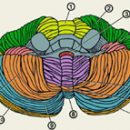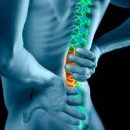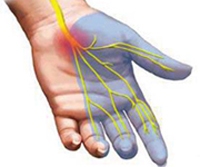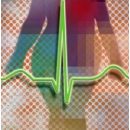Siringomyelius in Greek means «tubes along the spinal cord». Where does this attack come from? Even scientists can not unambiguously answer this question. But although the reasons are accurate and not defined, everything else about this disease is known to science.
Content
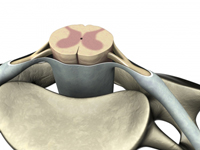 Siringomyeliya is a slowly progressive nervous disease, characterized by the formation of peculiar tubular cavities inside the spinal cord. The name reflects the specifics of the disease: in Greek «Siring» - a tube, «Mielos» - spinal cord.
Siringomyeliya is a slowly progressive nervous disease, characterized by the formation of peculiar tubular cavities inside the spinal cord. The name reflects the specifics of the disease: in Greek «Siring» - a tube, «Mielos» - spinal cord.The formation of cavities occurs due to the growth and decay of the specific gliose tissue, as well as due to the violation of the dynamics of the spinal fluid. Parts of cervical and lumbar spinal cords are especially susceptible to this process.
Although the disease is known since the XVI-XVII centuries, scientists have not yet come to a common opinion about its origin. Some believe that the reasons for the development of Siringomyelia lies in the improper laying of the nervous system during the period of intrauterine development. This is also indicated by the accompanying diseases of the skeleton development defects, for example, pronounced vertebrate cyphoscolyosis or exorbitantly long hands. Perhaps violations of the bookmarks of nervous tissue are associated with genetics. This is evidenced by the fact that in regions with low migration, for example, in the Volga region, the disease occurs more often. In such areas, the population is uniformly, there are often bloodary marriage and, accordingly, the likelihood of the development of hereditary diseases increases.
Another hypothesis about the origin of Siringomyelia is the absence in water or soil of the region of copper, zinc and other trace elements necessary for the normal development of nervous and bone tissue, or, on the contrary, excessive accumulation of substances that negatively affect the formation of a growing body, such as radioactive elements.
As for the frequency of morbidity, then according to medical statistics, it varies from 3 to 17 people per 100 thousand population of different regions. Siringomyelia and men and women are sick, but more often alert is striking representatives of strong sex. Perhaps this is due to physical exertion on the spine. Pathology can manifest itself in children's or adolescent age, but most often - in the period from 20 to 40 years.
Three types of Siringomyselia are known: the first is the most favorable. Symptoms of the disease are not too pronounced and remain constantly at the same level. With the second type of syringomy, its manifestations slowly progress about ten years. And finally, the third, rarely found, the most aggressive type of illness, characterized by very rapid development.
With all the diversity of symptoms of Siringomyelia develops slowly and does not affect the life expectancy.
At all stages, the disease can also manifest themselves strong, burning or drilling pain.
When the tubular cavities are formed in the cervical spinal cord, trophic joints of the joints, more often thanks, elbow and shoulder, are deformed, thicken, they are formed on them. When a person moves, the affected joints make a characteristic creak. It arises from contacting the surfaces of the surfaces. Atrophy of the brushes of hands can occur, combined with various impairment of their functions. For example, brushes are sometimes very thin and start to remind «Kostyish paws» or, on the contrary, become overly plump. Nails break, Panariums may occur in the nail light area. Some patients have baldness.
As is known, internal organs are associated with different areas of the spinal cord, so the development of pathologies of these bodies is possible. Often Siringomyelia accompany gastritis or peptic ulcer and duodenal ulcers.
Many of the listed symptoms may be observed in syringomyelic syndrome. It occurs in hemorrhages due to severe spinal injuries, after transferred meningomyelitis, as well as with spinal cord tumors. It is very important to differentiate these diseases.
The most radical method of treating this disease is surgical. Also radon baths and symptomatic treatment, depending on the specific manifestations of the disease. Often, treatment is limited to massage and therapeutic physical education.
Siringomy's sufferers and, in particular, impaired pain and temperature sensitivity should treat heating devices and other hot objects with great care. In order to prevent the exacerbations of the disease, it is necessary to avoid the injuries of the spine and physical overload. However, such insurance will not hurt anyone.

